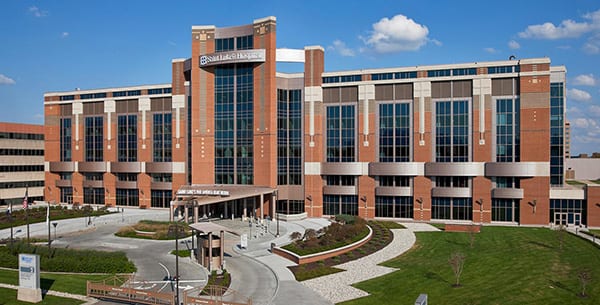Asked to condense our experiences and takeaways from the recent events, our answer is yes “Hospital Telehealth Can Really Do All That!” At the American Telemedicine Association’s (ATA) International Conference in Orlando last month, and the National Rural Health Association’s (NRHA) Rural Hospital Innovation Summit which followed two weeks later in San Diego, this is our prime takeaway from those important industry gatherings.
Sure, we discussed many trending issues with attendees at our booth and after our presentations at both conferences, but the one common theme we heard was a sense of wonder and amazement that telemedicine can do nearly as much as “boots on the ground” doctors can— for a fraction of the price— in an increasing number of specialties.
An uptick in Tele-ICU interest, meeting Leapfrog requirements
I think most providers and hospital executives are aware that telemedicine can cover staffing shortages at night, ease physician loads in emergency rooms, provide back-up support for nurse practitioners and physician assistants, but many were unaware of how quickly hospital telehealth has grown in various specialties, especially in the ICU, and how it can meet critical needs in areas they never would have dreamed of just a few years ago.
We heard hospital professionals talk about the growing lack of intensivists to staff their ICU beds, and they were happily surprised to hear that our inpatient telehealth physicians can run an ICU, handling everything from floor call to attending rapid responses and running codes.
With our Tele-ICU program, partner hospitals can provide 24/7 access to expert ICU physicians, manage gaps in intensivist coverage, and provide quick response times for emergencies. In addition to diagnosing and treating patients, Tele-ICU intensivists can provide effective follow-up care for the remainder of a patient’s stay, providing consults and ongoing support and advice to the local clinical team.
Our intensivists can do proactive rounding with ICU nurses, where teams assess, triage and institute early treatment in patients who experienced an acute decline in their clinical status. And they can help hospitals meet Leapfrog standards, including whether patients in ICUs are cared for by physicians board-certified in critical care medicine. That is Concern No. 1 with many of the hospitals executives we spoke with.
TelePsychiatry’s bottom-line benefits
What else did we hear at the industry conferences? Behavioral health was another key area of interest and concern for attendees. Hospital administrators are growing increasingly aware of TelePsychiatry’s role in accelerating ED throughput by providing timely psychiatric evaluations of patients. There’s little ROI in terms of professional billing with TelePsychiatry, so the value equation comes down to hospitals avoiding potential significant costs and better serving their patients and their families, particularly in rural areas, where patients often spend 24-48 hours in an ED bed awaiting a psychiatric consult because there are no behavioral healthcare professionals nearby.
Even the tele-vocabulary has changed
One of the slides in my presentations on TeleNeurology and TeleNocturnist care illustrates the change in attitudes about inpatient telemedicine that we increasingly see in the industry. Our experience at this year’s conferences was additional validation to this change.
Words we most frequently heard a few years ago from hospital executives and providers when we brought up the topic of hospital telehealth were “Robot,” “Machine,” “Don’t,” “Can’t,” “Send,” “Computer,” and “Them.”
Today, the vocabulary has changed remarkably. We more often than not hear words like “Doctor,” “Quality,” “Do,” “Can,” “Timely,” “Now,” “Tool,” “Us,” “Solution,” “Imagine,” and “When can you start?”
A bright year ahead
It’s a change that is refreshing to see. As a result, we expect a major uptick in requests for telemedicine coverage in the coming year, particularly in the Tele-ICU area. And we expect to see continued interest in TeleStroke, TeleNocturnist and TeleNephrology, as well as TeleHospitalist back-up support for Nurse Practitioners (NPs) and Physician Assistants (PAs), which no other provider group in the telemedicine space currently offers.
“You can really do all that?” hospital leaders ask.
Our answer? “Yes, we can.”

SAINT LUKE’S HEALTH SYSTEM • KANSAS • HOSPITALIST
TeleNocturnist Program at Saint Luke’s Unmatched in Timeliness, Adaptability, Expertise
Key Benefits
Telemedicine Consultation = Economy Of Scale & Significant Savings
Timeliness And Responsiveness







I had no idea that telemedicine could do just as much as “boots on the ground” doctors could. It is important to remember that taking the time to learn about how this works can help you make sure it is the best for you and that it will work for your condition. My brother was talking about how he was considering Tele neurology, so I wanted to do a little research and see what it was all about.
great posts and info keep up the good work
We appreciate your positive feedback. Please feel free to suggest any other telemedicine topics you’d like to see covered.